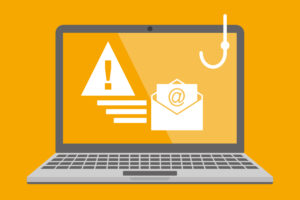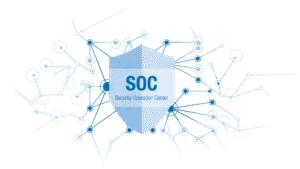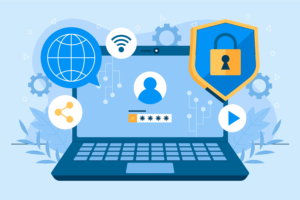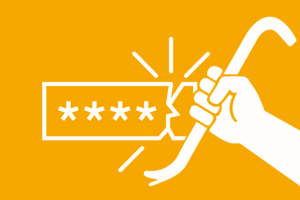Kategorie: ‘IT-Security’
Workshop of the State Initiatives for Federated Identity Management
On November 12 and 13, 2025, the biannual workshop of the state initiatives for federated identity management (IDM) took place at the IT Center of RWTH Aachen University. This year’s meeting was organized by the staff of the IDM.nrw project, which supports universities in North Rhine-Westphalia on their way to a state-wide, federated identity management system.
Representatives from Baden-Württemberg, Bavaria, Berlin, Mecklenburg-Western Pomerania, Lower Saxony, North Rhine-Westphalia, Rhineland-Palatinate, Saxony-Anhalt, and Thuringia, as well as from the German National Research and Education Network (DFN), came to Aachen to exchange experiences, discuss challenges, and initiate joint developments.
Recognizing Phishing – Deceptively Real, Yet Highly Dangerous

Source: Own illustration
Why this topic matters
Phishing emails are among the most common types of cyberattacks- even at universities. Attackers attempt to obtain passwords, personal data, or access to systems by sending emails that appear deceptively legitimate.
These messages often look official: they contain logos, signatures, and sender addresses from well-known institutions such as RWTH Aachen Universitys. That is precisely what makes them so dangerous.
In this article, we will show you how such phishing messages are structured and what clues can help you recognize them early on. We will also present current examples from the RWTH so that you can better assess how genuine these emails often appear.
IT-SAD: IT-Security Awareness Days 2025

Source: TU Braunschweig
From November 3 to November 14, 2025, the IT Security Awareness Days will take place for the tenth time. During these two weeks, a total of 18 online lectures on the topic of IT security will be held. These are organized by various universities.
The following institutions are involved (although not always with their own presentations): TU Braunschweig, TU Darmstadt, TU Dresden, University of Hildesheim, KU Eichstätt-Ingolstadt, University of Göttingen/GWDG, University of Marburg, University of Osnabrück, Leuphana University Lüneburg, University of Duisburg-Essen, University of Cologne, and Albstadt-Sigmaringen University of Applied Sciences.
DNS at RWTH Aachen Part 2: Security in the DNS – Protection Against Misuse

Source: Own Illustration
In the first part of this blog series on the Domain Name System (DNS), we explained various technical details. The very fact that DNS servers are consulted to convert computer names into IP addresses means that the system plays a very central role in the functioning of the Internet.
How quickly can my password be cracked?
How long can your password currently withstand a hacker?
In times when cyberattacks are commonplace and current supercomputers can test billions of combinations per second (future quantum computers may be able to test many more), password security is becoming a matter of digital survival. In this article, you will find out what methods attackers use to crack passwords – and what simple measures can make the difference between data theft and digital security.
SOC On-Call Service: IT Security Around the Clock

Source: Own illustration
Whether it’s suspicious activity on the network, compromised user accounts, or acute cyber attacks – every minute counts in an emergency. In order to be able to respond to security incidents at RWTH even faster and more effectively in the future, the IT Center’s Security Operation Center (SOC) has had an on-call service since June 1, 2025. This means that the SOC team can now also be reached outside regular working hours if necessary, ensuring greater security in the university network around the clock.
Towards the Future with AI – How the IT Center Is Supporting RWTH Aachen University on Its Way into the AI Age

Source: Pixabay
Artificial intelligence (AI) is no longer a topic for the future – it has arrived in the centre of society and is changing the way we research, learn and work. As one of Europe’s leading technical universities, it is therefore crucial for RWTH Aachen University to actively engage with the potential and challenges of this technology.
As RWTH’s central IT facility, the IT Center plays a central role in this: it develops technical solutions, ensures a data protection-compliant infrastructure and creates new services that enable the use of AI in the university context.
And not just since yesterday: For some time now, the IT Center has been working intensively on making artificial intelligence usable for the entire university.
What Is Typosquatting?

Source: Freepik
The internet offers many opportunities – but also risks. One of the lesser known but potentially very dangerous threats in the field of cyber security is typosquatting. But what does this term actually mean? Typosquatting refers to a technique in which attackers attempt to redirect users to fake or unwanted websites. This is usually done by exploiting typos or similar domain names of well-known websites. Instead of the actual website, you end up on a page that looks deceptively similar to the real one or contains completely different, sometimes malicious content.
How to Set up a Secure Home Network

Source: Freepik
More and more devices in our everyday lives are connected to the internet – from home offices and online banking to smart thermostats and surveillance cameras. And all these digital helpers access a common system: the home network. It forms the heart of our digital infrastructure at home. In this article, we explain what a home network is, what risks it poses, and how you can effectively protect it from attacks.
DNS at RWTH Aachen University Part 1:
History & Function of the DNS

Source: Freepik
The Domain Name System (DNS) makes the Internet usable by translating readable names such as rwth-aachen.de into IP addresses. It originated from simple lists of names and developed into a globally distributed, hierarchical system. Today, it fulfils many more tasks – for example in the areas of e-mail, IT security and network management. The DNS also plays a central role at RWTH Aachen University and is protected by modern technologies such as DNS firewalls. This article provides an overview of the origin, structure and current significance of the DNS.






